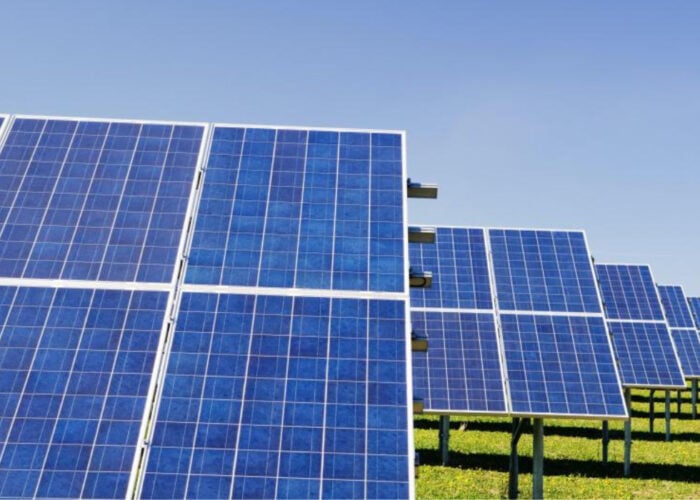Powercor installs Australia's largest battery in Ballarat South
20 August 2015: Electricity distributor Powercor is to install Australia’s largest battery of 2MW capacity in Buninyong.
The battery is being built in South Korea. Once complete, Powercor will install and start testing the battery in December 2015, with the battery expected to be fully operational by early 2016.
Unlock unlimited access for 12 whole months of distinctive global analysis
Photovoltaics International is now included.
- Regular insight and analysis of the industry’s biggest developments
- In-depth interviews with the industry’s leading figures
- Unlimited digital access to the PV Tech Power journal catalogue
- Unlimited digital access to the Photovoltaics International journal catalogue
- Access to more than 1,000 technical papers
- Discounts on Solar Media’s portfolio of events, in-person and virtual
The battery will be located in a 40-foot shipping container and will provide around 3,000 customers with an hour of back-up electricity in the event of a power outage. It will also increase the bandwith of the network on peak demand days, as it equates to 20% of the current powerline’s capacity.
Tim Rourke, chief executive, Powercor, said: “Think of it as adding an extra lane to a heavily used highway during peak hour. The battery’s additional capacity will help reduce stress on the network on peak demand days, which then increases the life of the existing electrical asset, reduces maintenance costs and ultimately lowers costs for our customers.
Data shows that customers in Buninyong experience an average of three outages a year with each outage lasting over 100 minutes.
Rourke said that initial analysis showed that two out of the three power outages could be prevented if a battery is in place. Installing a battery will reduce the total outage time by almost 66% to less than 33 minutes a year.
While the growing economic attractiveness of customer-sited storage systems in Australia has been discussed a lot in recent weeks, there has been less activity in the utility-scale sector by comparison.
Tesla’s Germany and Austria director returns to Sonnenbatterie
25 August 2015: Tesla’s country director for Germany and Austria, Philipp Schröder, is to return to Sonnenbatterie, the German maker of domestic and commercial battery-based energy storage systems, as managing director of sales and marketing.
Under Schröder’s guidance at Tesla in March 2015, new registrations of the Model S exceeded registrations of the BMW 7 Series and Porsche Panamera for the first time, Sonnenbatterie claimed.
In his previous role at Sonnenbatterie between 2012-14, Schröder led on the company’s sales structure, which has now been transferred from Germany to many other countries.
Sonnenbatterie chief executive Christoph Ostermann said: “[Schröder] has successfully demonstrated both [with] us and in Tesla that he can build new markets and structures sustainably.”
The company has sold around 8,000 units in Germany, from a household market that according to some estimates, numbers around 20,000 units sold in total to date. Sonnenbatterie also launched operations in the US recently.
Gildemeister's CellCube vanadium-redox-flow storage systems installed in Czech Republic
25 August 2015: Large-scale battery maker Gildemeister’s (now DMG MORI SEIKI) has installed two CellCube vanadium-redox-flow energy storage systems in the Czech Republic, marking the company's first foray into the country.
One was installed at National Park Šumava in the Czech Republic to charge electric vehicles. The project was officially opened in June this year to supply an e-charging station within the national park, which is part of the Bohemian Forest. A fleet of electric vehicles, which can be rented by visitors, can now be charged by off-grid means. The National Park-based CellCube storage works in combination with an 11kW solar installation and a 5kW wind plant. The renewable energy combination with storage allows for round-the-clock charging of the vehicles.
The other Czech Republic project was installed for the South Bohemian Science and Technology Park, at Budweis, around 100km south of Prague. Here a vanadium-redox-flow storage system CellCube FB 30-130 works in combination with a 76kW PV system. The storage system has a power output of up to 30kW and a storage capacity of 130kWh.
The Czech Republic's solar industry has faced a tough time in the past couple of years, involving retroactive support cuts and accusations of corruption, and this latest step could be a sign that as with other markets such as Germany, storage could boost the viability of solar.
Elsewhere, American Vanadium, a company which is actually headquartered in Canada, signed a deal with Gildemeister, which was taken over by Japan's DMG MORI SEIKI but still brands with its original name, to use CellCube for its projects. This included the award of a storage project at the Metropolitan Transportation Authority offices which run New York’s subway system.
Storage Round-up is an occasional feature of the PV Tech Storage site, presenting news items from around the industry in brief,







